Wiccan Symbols – The Ultimate Guide
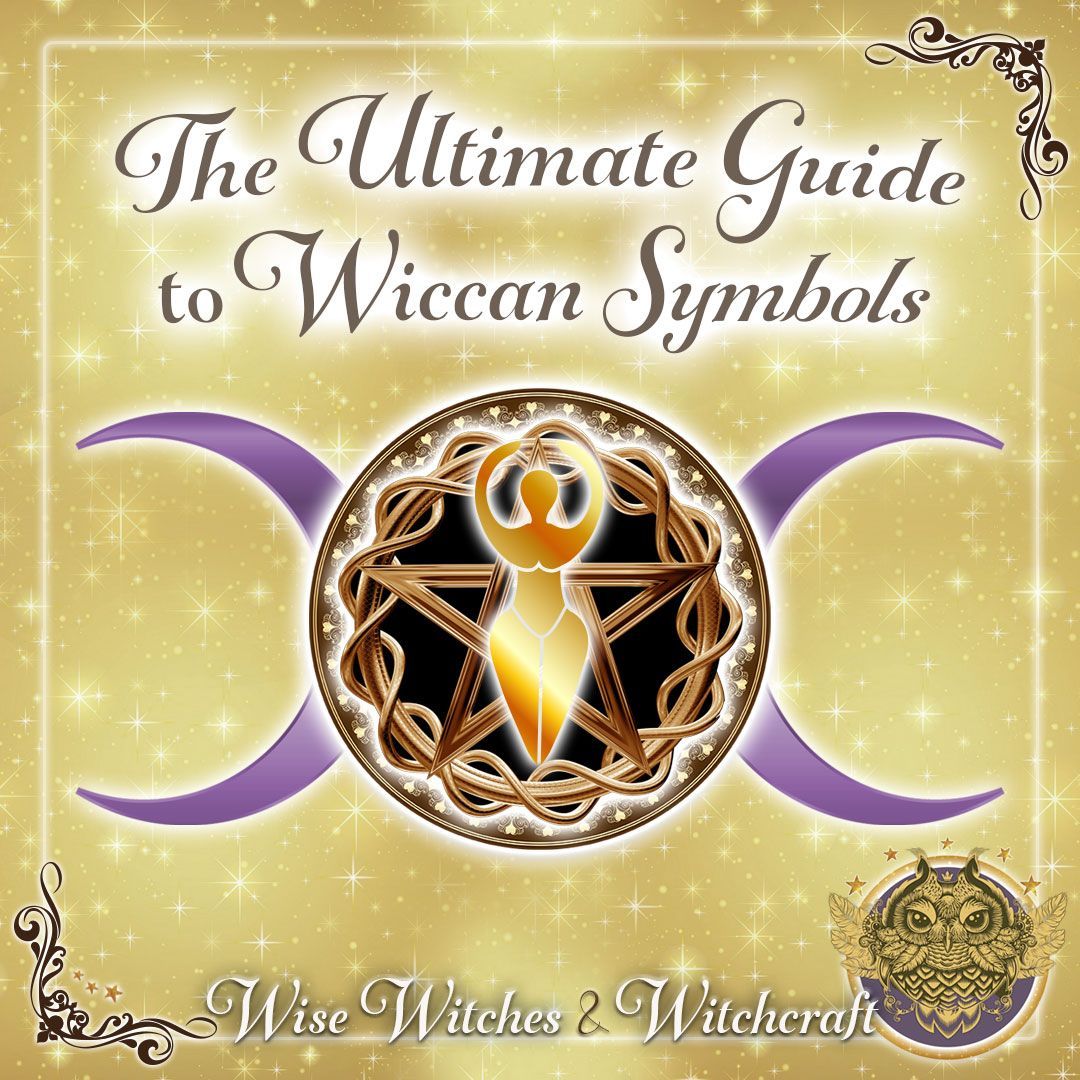
“It is through symbols that man consciously or unconsciously lives, works and has his being.”
-Thomas Carlyle
Merry meet and welcome to Wise Witches and Witchcraft! Here you’ll find the ultimate guide to Wiccan symbols. We’re jumping right into the symbols and their meanings! Join us as we explore the rich meanings behind the many symbols Wiccans use in their everyday lives and magickal practices!
Wiccan Protection Symbols
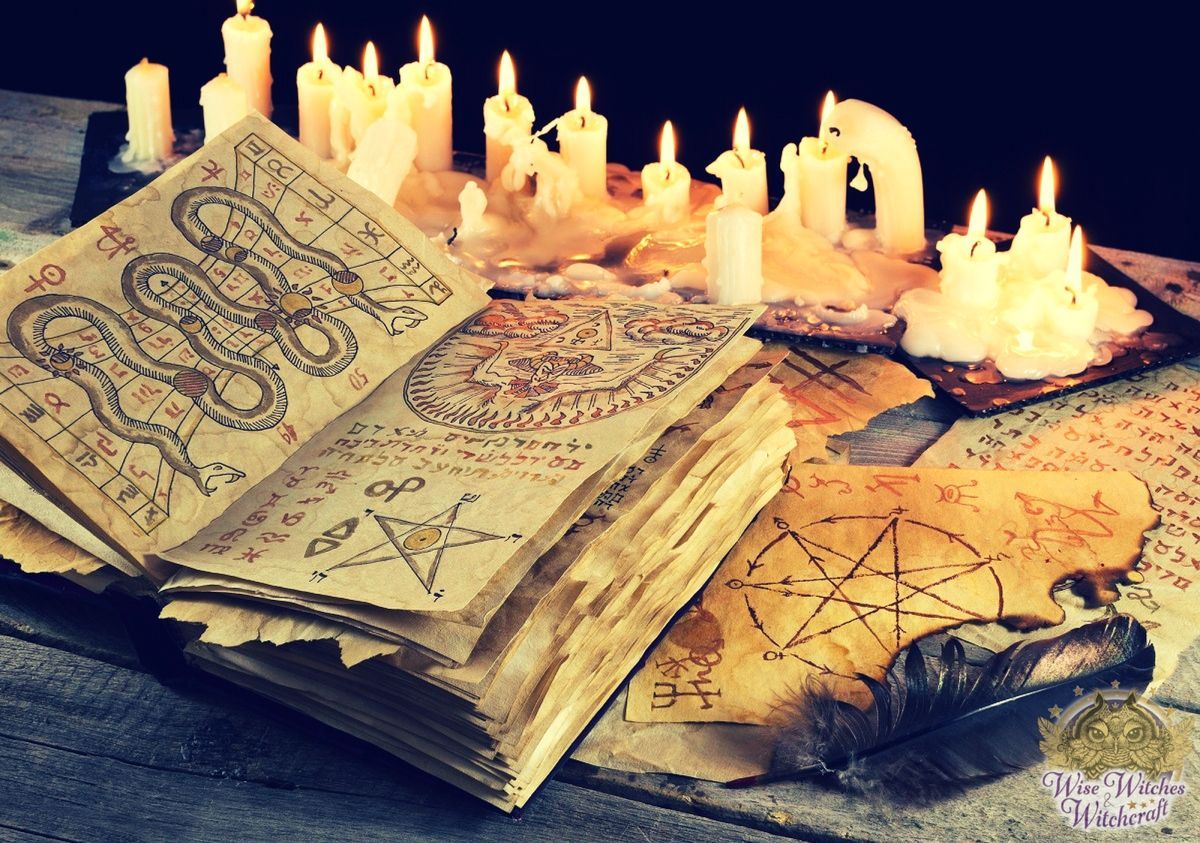
There are several symbols Wiccans rely on for their protective properties. Now, if you are new to Wicca, you might wonder why you’ll need protection at all. Aren’t Wiccans a friendly bunch?
Yes, Wiccans practice a nature or earth-based religion. They also try to adhere to the principle of “If it harm none, do what ye will.” This is the “Wiccan Rede” (also known as the “Witches’ Rede”). Its main principle stems from the Witches’ Rede by Doreen Valiente. The remaining body of the Witches’ Rede comes from a poem written by Lady Gwen Thompson. The poem is “The Rede of the Wiccae.”
Wiccans work with energies, spells, perform rituals, and use magick. The protection symbols Wiccan witches use are for keeping negative energies, thoughts, intentions, or conditions at bay. Here are some of the most common protection symbols. Wiccans use them in meditations, talismans, amulets, spells, and rituals.
Pentagram Meaning and Symbolism
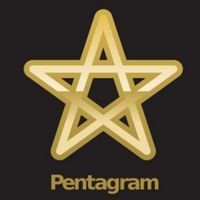 This Wiccan Symbol is a five-pointed star. Alternative names include the “star pentagon,” the “pentalpha,” or the “pentangle.” Sometimes it has a circle around it, but it is still a pentagram even without the circle. The word pentagram stems from the Greek, pente meaning five and gramme meaning line. The pentagram is a symbol referencing high magick in some circles.
This Wiccan Symbol is a five-pointed star. Alternative names include the “star pentagon,” the “pentalpha,” or the “pentangle.” Sometimes it has a circle around it, but it is still a pentagram even without the circle. The word pentagram stems from the Greek, pente meaning five and gramme meaning line. The pentagram is a symbol referencing high magick in some circles.
The meaning of pentagram changes throughout history, with its definition shaded by culture and the user. It is a symbol once meaningful to the ancient Babylonians, Greeks, and Christians. Some early meanings of the pentagram appear below:
- The Pentagram is a logogram in ancient Sumerian scripts. The depiction means “cavity, nook, pitfall, hole, or angle.”
- Pherecydes of Syros, a cosmologist and thinker, wrote the Pentemychos. The word means the “five recesses, crannies, and nooks.” The term also references the “five sanctuaries or altars.” Pherecydes body of work did not survive. But, it appears in the writings of Aristotle and others. The Pentemychos describes the creation of the universe. Here, the seeds (semen symbolizing watery chaos) of Chronos (time) are planted. Pherecydes describes the origins of the cosmos as under the rule of Zeus. The cosmos is also under the rule of Earth and Chronos. All three Greek deities are timeless beings.
- The pentangle or pentagram was at one time a symbol of the five wounds of Christ.
- The early Christian understanding of the five senses.
- Some early Christians associate the pentagram with the birth of Christ. The three wise men or three Zoroastrian astrologers, use it as a symbol. It represents the Star of Bethlehem. The pentagram, thus, earns the name of the “Three Kings’ Star.”
- Ancient Chinese systems use the pentagram to represent the five elements. Rather than air, fire, water, and earth, the elements are wood, air, fire, earth, and metal in Eastern societies.
- The ancient Greeks associate the pentagram with the elements. The elements are as Matter (Earth), Energy (Fire), Fluids (Water), and The Psyche or Soul (Aether). Air is the “glue” holding all the elements together. So, it doesn’t get listed among the elements. It is an assumed, automatic presence.
- Hygiea is what the Pythagoreans call the pentagram which means “health.”
- Pythagoras, a Greek philosopher, also assigns the pentagram with symbolism. Here, he suggests the start is a figure representing the man. Two points align with the arms, two with the legs, and one with the head. This image is like later depictions of the “Vitruvian Man,” by Leonardo da Vinci.
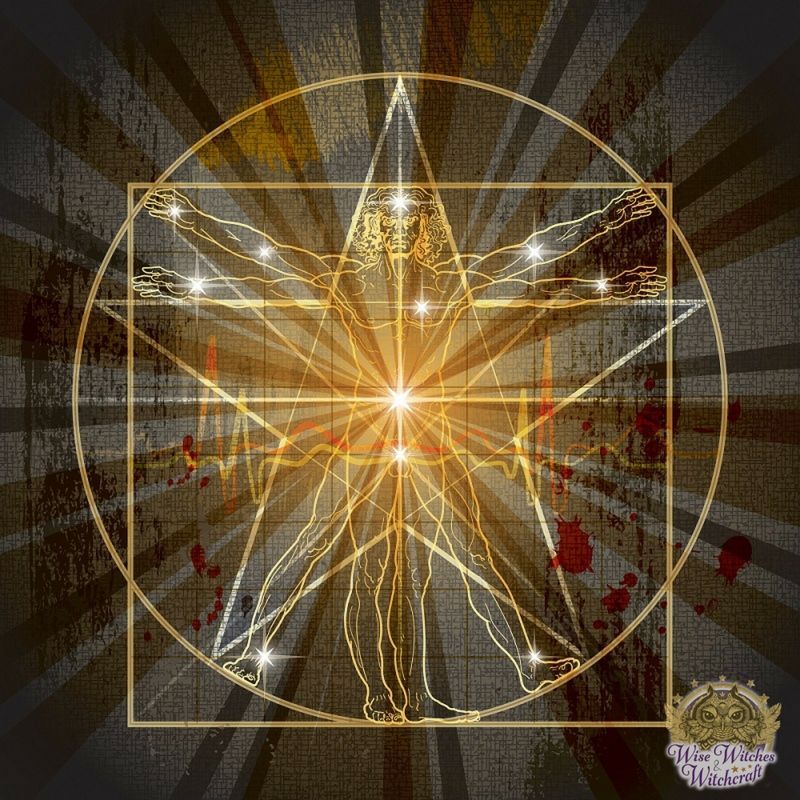
- The symbol of the pentagram was once a secret sign of being part of the Pythagoras’ school. This is true when the organization goes underground.
- In the 1300s, the word pentangle (sic) comes into use. In Sir Gawain and the Green Knight, the pentagram or pentangle appears on the knight’s shield. Sir Gawain is King Arthur’s nephew, the pentangle on his shield is a golden hue resting against a rich red backdrop. The points of the pentangle signify the virtues of the knight. The knight’s virtues are piety, chivalry, chastity, courtesy, and generosity.
- The Pentagram appears in the writings of King Solomon. The five points interconnect and signify a group of five things. The pentagram represents the five joys of Mary. It signifies the five virtues of knighthood. It can represent the night’s perfection in his five senses. It also signifies his five fingers and his faith in the Five Wounds of Christ.
- Constantine, a Roman Emperor, uses a seal featuring the pentagram. He also wore an amulet with the figure on it.
- A French term might point to the time when pentacles are first worn as amulets. Pentacol is a 14th-century term signifying something worn around one’s neck. Later, in the 16th century, there’s the French term “Pentacle.” It was a word referencing necromantic practices. It also references a five-branched candlestick.
- The fifteenth-century magician, Heinrich Cornelius Agrippa, corresponds each pentagram point with elements.
- In the 19th century, Eliphas Levi separates the meaning of the pentacle and pentagram. If the star has one point up, the star has positive meanings (pentacle). With two points up it maintains more sinister meanings (pentagram).
- Today, Some Wiccans still use the pentagram to signify high magick, while others choose to wear the star with a single point up (pentacle) to serve as a form of magickal protection.
Pentacle Meaning and Symbolism
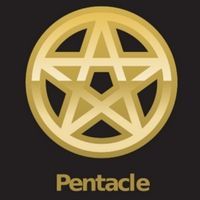 The pentacle or pantacle is a star inside a circle with five points. Sometimes the points extend beyond the circle. The extension means the star stretches into the infinite. Among one of the most important Wiccan symbols of protection, the Pentacle signifies so many things. Look below at the evolution of its meaning.
The pentacle or pantacle is a star inside a circle with five points. Sometimes the points extend beyond the circle. The extension means the star stretches into the infinite. Among one of the most important Wiccan symbols of protection, the Pentacle signifies so many things. Look below at the evolution of its meaning.
- In the Old Testament, the pentacle is one of the Seven Seals featuring one of seven names referencing God. King Solomon has one on his ring. The points signify the Pentateuch’s five books or the Torah.
- The sign of the pentacle and pentagram aligns with the goddess of spring. She is known by many names including the Underworld Ceres, Kore, Kerma, Core, or Carmenta. In Roman myth, she creates the alphabet. The apple is the fruit of Kore. When an apple is cut in half through its equator, it reveals five points of a pentagram. (Cool, right?) Each point contains a seed (a symbol relating to the seeds of Chronos in the Pentemychos). The Gypsies (Roma) call the center of an apple cut along its equator as “The Star of Knowledge.”
The ancient Celts suggest the pentacle is a sign of the Goddess Morgan or Morrigan. The five points of the pentacle become pervasive in some ancient Celtic lands. In Ireland, there were five paths of law, provinces, and great roads. The Fae are counted in groups of five as well. Further, some creatures in myth have cloaks that are five-fold. The pentacle aligns with a number of concepts and ideas including:
- The earth.
- The quintessence of magick.
- The void of nothingness from which the cosmos emerges.
- The five elements. This includes earth, air, fire, water, and Akasha (all elements in combination).
- The circle of birth, life, death, and rebirth.
- The cardinal directions of East, South, West, and North.
- In the 19th century, the coins on Tarot decks now include pentacles. It allows the suit to align with Kabbalistic teachings.
Inverted Pentagram or Pentacle Meaning & Symbolism
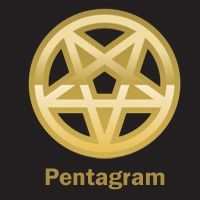 In Wicca, the pentagram and pentacle are both in use as protection symbols. Neither symbol is sinister or has negative meanings when Wiccans are using them. Yet, even with accessible information, people do not always understand Wiccan symbols. You may encounter people who do not understand the meaning of a pentacle or pentagram. What they’ve learned about the symbol might be in error.
In Wicca, the pentagram and pentacle are both in use as protection symbols. Neither symbol is sinister or has negative meanings when Wiccans are using them. Yet, even with accessible information, people do not always understand Wiccan symbols. You may encounter people who do not understand the meaning of a pentacle or pentagram. What they’ve learned about the symbol might be in error.
Sometimes, people are open to learning the true meaning of Wiccan symbols. In other situations, people are not open to it, and that’s okay too. Wiccans do not recruit other Wiccans. We don’t preach our religion as the “one and only true way” to Spirit. As you grow spiritually, you’ll be able to identify those open to understanding.
One-Point Up or Down? In Wiccan Symbols, is There Still a Difference?
The short answer is, “Yes.” There remains a difference between the pentacle with one point up and the symbol with two points up. Outside Wicca, some occultists see the figure with two points up as relating to the Satanic Church. Wiccans have nothing to do with Satan or Satanism. Thus, there are differences in meaning.
One-Point Up
The one point up pentacle signifies ascension or rising above matter. The points represent the Four Airts (elements or arts) Air, Fire, Water, and Earth. The final point is Akasha or Ether and represents the Spirit. Each point has correspondences linking to the four cardinal points and Akasha.
Two-Points Up
The two points up pentagram has the star’s tip pointing downward; it represents spirit at the bottom. It’s a position symbolic of one’s soul descending into the realm of matter or physical. The symbol aligns with practices relating to high magick and lineage covens. It’s for those who are second-degree witches proceeding with initiation. It symbolizes the practitioner’s effort to turn inward. There, they gain mastership over darkness. They face their prejudices, ignorance, fears, and dark emotions. Ultimately, the inverted pentagram is a sign of a mastership over the self.
For more information about the Pentacle and a variety of pagan symbols, check out the article “Pagan Symbols and Meanings,” here on Wise Witches and Witchcraft.
Wiccan Symbols, the Pentacle, the Pentagram, and Elements Symbols
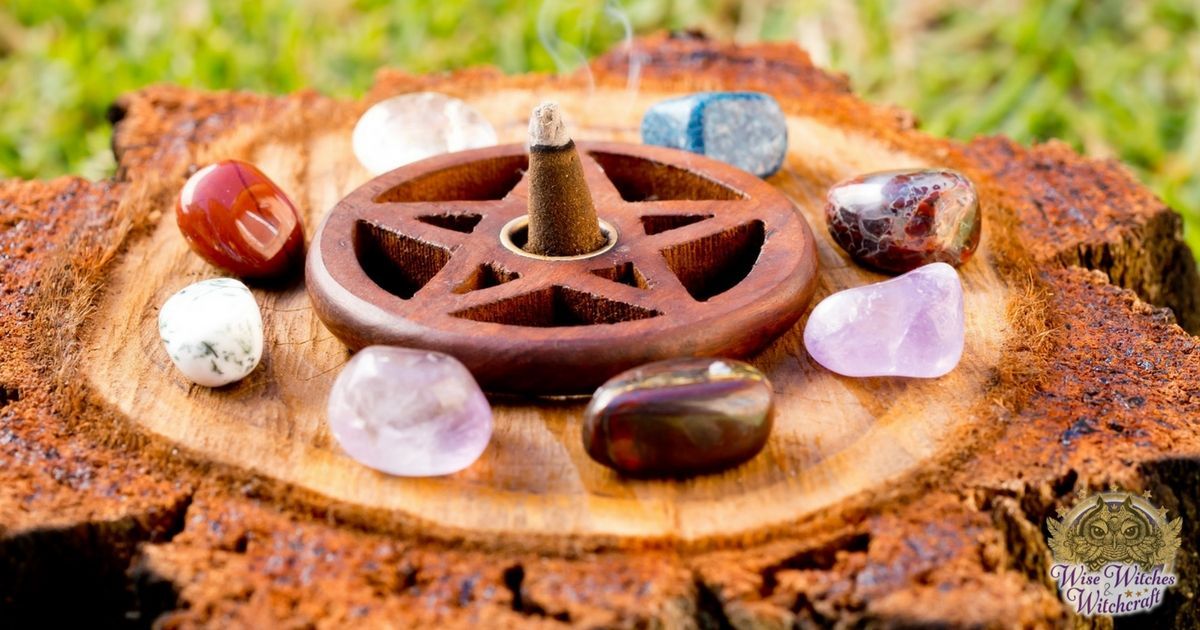
The elements and the understanding of them is something that differs throughout history and different cultures. Let’s explore how the meaning and identification of the elements change over the course of time. We’ll follow the historical changes on how people view the elements, with some of the symbols and correspondences Wiccans use today. But, first we’re off on the Magic School Bus to see what people believe about the elements throughout history!
The Classical Elements: The Ancient Greeks see the classical elements as air, fire, water, earth, and Aether. The Greeks also see air as an assumed element so it is sometimes not mentioned in magickal writings. The Air is something holding everything together.
The Four Roots: Empedocles references the four classical elements often as earth, air, water, and fire. He wrote a 2000-line poem On Nature where he explains his believes about the origins of the universe and the elements. There’s a bit of irony here as he never refers to the classical elements as elements at all. Rather, they are the four “roots.” Each element or “root” corresponds with a deity.
Zeus, God of Lightning and the Sky, corresponds with Fire. Hera, Goddess of Marriage and Women, corresponds with Earth. Nestis, also Kore or Persephone the goddess of spring and the Underworld, aligns with Water. Aidoneus corresponds with Air. It is Plato who attributes the term elements to the four roots Empedocles mentions in his works.
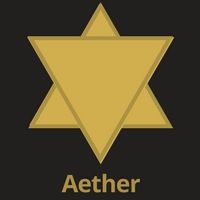 The Fifth Essence: Aether is something Aristotle adds to the understanding. Believing “nature abhors a vacuum,” Aristotle believes Aether is what fills all invisible space. He makes it an element along with the other four. It is the Quintessence or “The Fifth Essence.” In ancient India, Aether is Akasha.
The Fifth Essence: Aether is something Aristotle adds to the understanding. Believing “nature abhors a vacuum,” Aristotle believes Aether is what fills all invisible space. He makes it an element along with the other four. It is the Quintessence or “The Fifth Essence.” In ancient India, Aether is Akasha.
Alternative Elemental Wording: In alternative ancient cultures like Tibet, Japan, Babylonia and Egypt, the references might differ. For instance, the element of “Air” might be “wind.” The Akashic element might be “the void.”
The Chinese System of Elements: The Wu Xing system in ancient China defines the elements as mù (Wood), huǒ (Fire), tǔ (Earth), jīn (Metal), and shuǐ (Water). The five elements in this system are not so much material as they are types of transitions or forms of energy.
Ancient Egypt: The four elements appear in the “Virgin of the World” (A Greek text called the Kore Kosmou). The text is said to come from Hermes the Thrice Great or Hermes Trismegistus. The work points to the four elements being air, fire, water, and earth. In the Kore Kosmou, the work explores how some animals relate to the elements. It also explores how the elements influence behaviors.
Medicine: Per Galen of Pergamon, a philosopher, physician, and surgeon, Hippocrates of Kos corresponds the elements and the human body. Hippocrates is also the Father of Medicine. He also links the elements with the four humours. These humours define a person’s temperament, health, and behaviors. The humours are Blood (Air), Yellow Bile (Fire), Phlegm (Water), and Black Bile (Earth).
Western Alchemy: the alchemists have a written symbol for each of the four Hellenic elements. They are as follows:
The Four Airts as Energetic Forces and Element Qualities
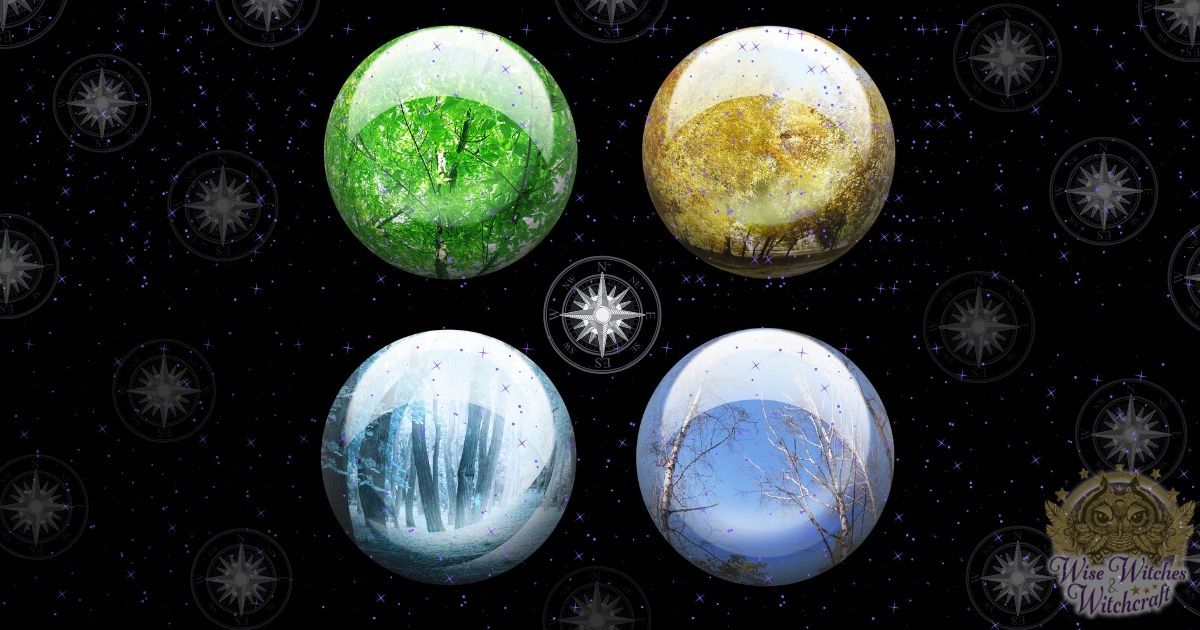
When referencing the elements, Earth, Air, Fire, and Water, remember them as natural forces within the Universe creating the physical world. The reference is not directly to the substances of the same identification (although, those substances would fall under the rulership of the forces of which they have the same name. For example, earth substances fall under the rulership of the natural force or energy of Earth; air falls under the natural rulership of the energetic force of Air, etc.). The four elements are Principles each of which has one or more qualities assigned to it:
- Earth Qualities: Dry and Cold
- Air Qualities: Moist and Hot
- Fire Qualities: Dry and Hot
- Water Qualities: Moist and Cold
Each element has a series of correspondences. A correspondence is a concept, idea, and both tangible and intangible things which share qualities with the natural force that rules it. Next, we’ll examine what each element symbolizes, the element’s symbol, and the correspondences sharing qualities with each element.
Air Element Symbolism & Meaning
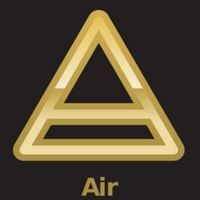 The Air symbol is a triangle with the upper third of the equilateral triangle separated by a line running through it. The symbol represents the distinct separation of air and earth. The triangle points up, signifying ascension into the air or realm of spirit. At the same time, if you compare the alchemical earth symbol to air’s symbol, it also denotes the complementary nature of air and earth elements based on the icons’ similarities. The bar creating the separation is suggestive of weightiness and to ceases fire’s ascension. With comparison to the Earth element, the Earth is heavier than air. This element is a masculine force: It is active and projective.
The Air symbol is a triangle with the upper third of the equilateral triangle separated by a line running through it. The symbol represents the distinct separation of air and earth. The triangle points up, signifying ascension into the air or realm of spirit. At the same time, if you compare the alchemical earth symbol to air’s symbol, it also denotes the complementary nature of air and earth elements based on the icons’ similarities. The bar creating the separation is suggestive of weightiness and to ceases fire’s ascension. With comparison to the Earth element, the Earth is heavier than air. This element is a masculine force: It is active and projective.
Air Correspondences
- Angel Association: Chassan – Air Angel whose name is on the Seventh Pentacle of the Sun.
- Archangel Association: Raphael – Angel of Compassion; Angel of Creativity; Angel of the Air; Ruler of Mercury.
- Cardinal Direction: East.
- Chakra: Anja.
- Colors: Light Blue, Yellow, and White.
- Divine Name and Meaning: Shaddai El Chai meaning “Almighty Living God.”
- Elemental: Per Paracelsus, the invisible creature called the Sylph is the ruler of the element of Air.
- Elemental King: Paralda.
- Elemental Rulership: Ariel whose name means “Lion of God. The Angel who holds rulership over Air.
- Five Senses: Hearing/Ruler of Sound (Air carries sound).
- Jungian Processes: Sensation.
- Magical Tools: Wand (***Some practitioners prefer the association of swords).
- Metal: Mercury, Quicksilver.
- Season: Spring.
- Tarot: The Suit of Wands (***Some practitioners prefer the association with the suit of Swords).
- Tetramorph Association: Man.
- Time of Day: Dawn.
- Zodiac: Aquarius, Libra, and Gemini.
Fire Element Symbolism & Meaning
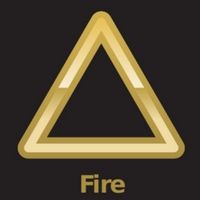 The sign of fire is a simple equilateral triangle that is empty. It points upward indicating the fire’s dependence on air for fuel. The point of the triangle point upward is also suggestive of particles that are both “sharp” and “ascending.” Of all the elements, fire is considered the most volatile. The element of fire like air being masculine. Below are just some of the correspondences associated with this purifying element.
The sign of fire is a simple equilateral triangle that is empty. It points upward indicating the fire’s dependence on air for fuel. The point of the triangle point upward is also suggestive of particles that are both “sharp” and “ascending.” Of all the elements, fire is considered the most volatile. The element of fire like air being masculine. Below are just some of the correspondences associated with this purifying element.
Fire Correspondences
- Angel Association: Aral, whose name appears on the seventh Pentacle of the Sun.
- Archangel Association: Michael, Angel of the Sun, and the Angel of Truth.
- Cardinal Direction: South.
- Chakra: Solar Plexus.
- Colors:Red, orange, green, royal blue, yellow, and white.
- Divine Name and Meaning: Yahweh Tzabaoth meaning “Lord of Hosts.”
- Elemental: Per Paracelsus, the invisible creature, the salamander, is the elemental associated with Fire.
- Elemental King: Djin.
- Elemental Rulership: Seraph.
- Five Senses: Sight.
- Jungian Processes: Feelings.
- Magical Tools: Swords, daggers, Boline (***Some practitioners prefer the association of wands).
- Metal:Gold and Iron.
- Season: Summer.
- Tarot: The Suit of Wands (***Some practitioners prefer the association with the suit of Swords).
- Tetramorph Association: Lion.
- Time of Day: Noon.
- Zodiac: Aries, Leo, and Sagittarius.
Water Element Symbolism & Meaning
 The sign of Water is an equilateral triangle with the point downward. The triangle appears empty. The design and direction of the triangle is suggestive. It hints at the weighty and significant downward motion of particles. It suggests the weightiness of Water itself. Water is associated with Yin or feminine energies. It’s an element which rules the realm of dreams and the deep subconscious. Additional correspondences align with the qualities of water as a natural force appear below.
The sign of Water is an equilateral triangle with the point downward. The triangle appears empty. The design and direction of the triangle is suggestive. It hints at the weighty and significant downward motion of particles. It suggests the weightiness of Water itself. Water is associated with Yin or feminine energies. It’s an element which rules the realm of dreams and the deep subconscious. Additional correspondences align with the qualities of water as a natural force appear below.
Water Correspondences
- Angel Association: Taliahad, whose name appears on the seventh Pentacle of the Sun.
- Archangel Association: Gabriel, whose name means “God is My Strength.” He is the angel of the First Heaven and the Moon.
- Cardinal Direction: West.
- Chakra: Sacral.
- Colors:Dark Blue, Light Blue, Sea Green (White as a substitute).
- Divine Name and Meaning: Elohim Tzabaoth meaning “God of Hosts.”
- Elemental: Per Paracelsus, the invisible creature, the undine, is the elemental associated with Fire.
- Elemental King: Necksa.
- Elemental Rulership: Tharsis.
- Five Senses: Taste.
- Jungian Processes: Intuition/Psychic.
- Magical Tools: Cup/Chalice.
- Metal:Silver.
- Season: Autumn.
- Tarot: The Suit of Cups.
- Tetramorph Association: Eagle.
- Time of Day: Dusk.
- Zodiac: Cancer, Scorpio, and Pisces.
Earth Element Symbolism & Meaning
 The earth alchemical symbol is an equilateral triangle with the lower one third separated from the remaining two-thirds of the triangle body with a line. The triangle point is pointing downward. It signifies descent into the realm of matter. At the same time, if you compare the alchemical earth symbol, it also denotes the complementary nature of earth and air elements based on the icons’ similarities. The bar creating the separation is suggestive of weightiness. Earth is the most fixed of all the four elements. It’s symbol signifies Earth’s ability to halt the descending motion of water. Additional correspondences aligning with the natural force of the Earth element appear below.
The earth alchemical symbol is an equilateral triangle with the lower one third separated from the remaining two-thirds of the triangle body with a line. The triangle point is pointing downward. It signifies descent into the realm of matter. At the same time, if you compare the alchemical earth symbol, it also denotes the complementary nature of earth and air elements based on the icons’ similarities. The bar creating the separation is suggestive of weightiness. Earth is the most fixed of all the four elements. It’s symbol signifies Earth’s ability to halt the descending motion of water. Additional correspondences aligning with the natural force of the Earth element appear below.
Earth Correspondences
- Angel Association: Phorlakh or Furlac, Angel of the Earth.
- Archangel Association:Uriel – Angel of the Abyss, ruler of Uranus.
- Cardinal Direction: North.
- Chakra: Root Chakra.
- Colors:Black, Brown, Dark Green (White as a substitute).
- Divine Name and Meaning: Adonai ha Aetz meaning “Lord of the Earth.”
- Elemental: Per Paracelsus, the invisible creature, the gnome, is the elemental associated with Fire.
- Elemental King: Ghob.
- Elemental Rulership: Kerub.
- Five Senses: Touch.
- Jungian Processes:Sensation.
- Magical Tools: Pentacle.
- Metal:Lead.
- Season: Winter.
- Tarot: The Suit of Pentacles.
- Tetramorph Association: Bull.
- Time of Day: Midnight.
- Zodiac: Taurus, Virgo, Capricorn.
Hexagram Element Symbolism & Meaning
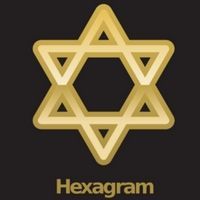 In putting all the element triangles together, it is like merging two pyramids: One pointing toward the earth and the other pointing toward the sky. When merging two triangles in this manner, it creates a six pointed star called a hexagram. To some, this is the Jewish sign of the Star of David. It is also known as the Star of Solomon. The hexagram’s symbolic meaning signifies the Godhead and the Macrocosm. It also shows the merging of the Feminine and Masculine Divine.
In putting all the element triangles together, it is like merging two pyramids: One pointing toward the earth and the other pointing toward the sky. When merging two triangles in this manner, it creates a six pointed star called a hexagram. To some, this is the Jewish sign of the Star of David. It is also known as the Star of Solomon. The hexagram’s symbolic meaning signifies the Godhead and the Macrocosm. It also shows the merging of the Feminine and Masculine Divine.
It is a comingling of all elements and represents, with great simplicity, the Hermetic axiom, “As above, So below.” In other words, “As it is in the heavens or universe, so it is on Earth,” and vice versa. The symbol stands for a balance of all elements and energies. It represents loving unconditionally, and the heart chakra. In the Hindu belief system, the hexagram signifies the union of the God and Goddess.
Many symbols represent the Triple Goddess/Goddess energies. Focus on the Goddess stems from the fact we live in a patriarchal society. In contrast, Wiccans worship and honor a Feminine Divine aspect and a God. The God in Wiccan beliefs corresponds with solar energies. The Goddess aligns with the Moon. Thus, it is appropriate to have symbols of the goddess containing lunar imagery. Examples of Moon symbols are:
Moon Symbolism and Meaning in Wicca
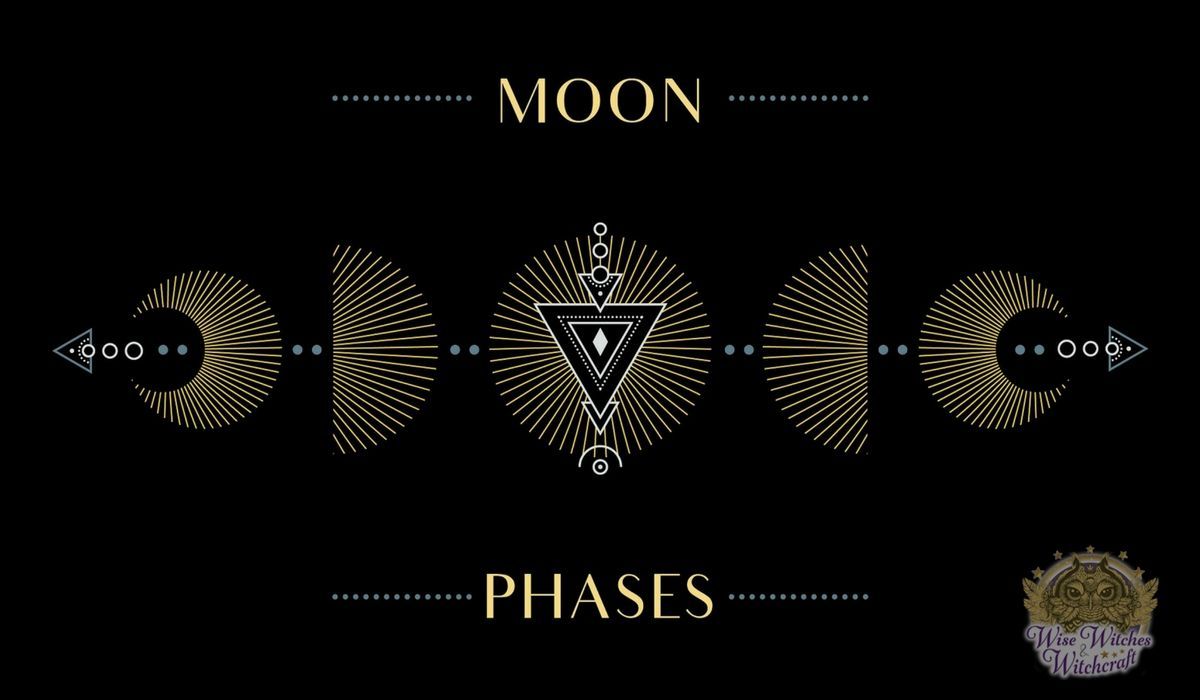
Triple Moon Meaning and Symbolism
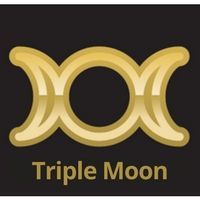
All moon phases are significant when referencing Wiccan symbols. The phases of the moon bearing meaning including partial and full moons. The phases of the moon include waxing, full, waning, new, and blue. Wiccans also pay attention to celestial events involving the moon. There are special attention one pays to an event like a partial or total eclipse. We also note when the moon goes void of course, especially when using astrological events for planning magickal operations.
The Waxing Moon
The waxing moon symbolizes fresh starts or new beginnings. The moon phase is ideal for performing spell work involving fresh starts and new beginnings. A visual symbol for the waxing moon is the letter “C” backward. The waxing moon aligns with the Maiden aspect of the Feminine Divine.
The Full Moon
It is the time for practicing all magick. It is a time where the moon is “pregnant with power.” The visual symbol is a round circle. The full moon corresponds with the Mother aspect of the Triple Goddess/Goddess.
The Waning Moon
It is the last quarter moon. It is the time of endings. It is the best time to perform magick related to banishings, clearings, and endings. The waning moon’s association with conclusions corresponds with the crone aspect. Its visual representation is like the letter “C.”
The New Moon
Many Wiccans do not perform magick on the New Moon. It is a time of rest and contemplation. It is also a time to honor the Goddess and God. The New Moon’s visual icon is a round circle with a black center. This moon phase aligns with the Divine’s Dark Goddess aspect.
The Blue Moon
The Blue Moon phase is determined one of two ways due to a prior error in calculating the moon’s appearance. Because of the error, both methods of calculation are considered acceptable. It is the 13th moon in a year. It is also the second full moon in any month. The saying “Once in a blue moon,” means once in a great while. A blue moon is not a common occurrence. It is a great moon phase for special empowerment during magickal workings.
For more information on the various moon phases and some of the magickal operations appropriate for each phase, check out the article “Pagan Symbols and Their Meaning.”
Sacred and Magickal Wiccan Symbols
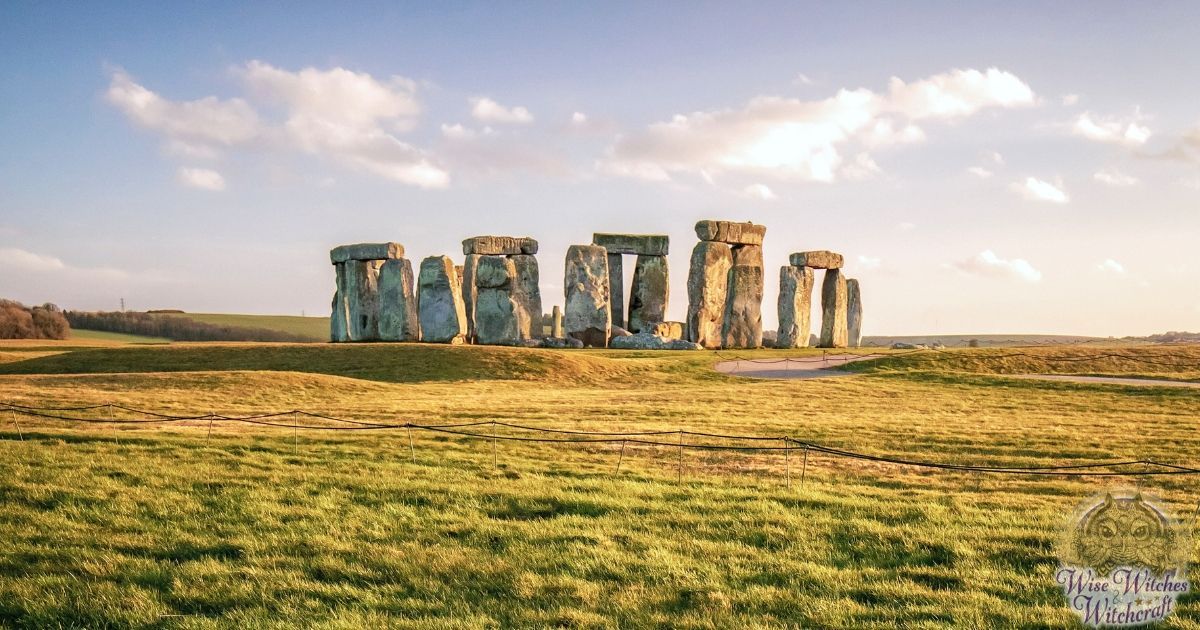
Goddess Meaning & Symbolism
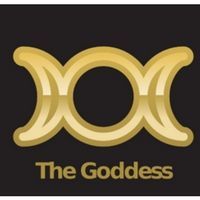 The Triple Goddess’ three aspects of the maiden, mother, and crone, align with the moon phases. A waxing moon signifies the maiden aspect; a full moon represents the mother; and the waning moon corresponds with the crone aspect of the Divine Feminine. The three phases of the moon are a symbol of femininity, and therefore signify the stages of a female’s life: Childhood/Adolescence, Young Adulthood/Adult, and Elder/Crone.
The Triple Goddess’ three aspects of the maiden, mother, and crone, align with the moon phases. A waxing moon signifies the maiden aspect; a full moon represents the mother; and the waning moon corresponds with the crone aspect of the Divine Feminine. The three phases of the moon are a symbol of femininity, and therefore signify the stages of a female’s life: Childhood/Adolescence, Young Adulthood/Adult, and Elder/Crone.
For more information on the Triple Crescent Moon and it’s symbolism, check out the article, “Pagan Symbols and Meaning,” here on Wise Witches and Witchcraft!
Triple Crescent Meaning and Symbolism
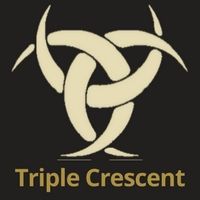 A triple crescent moon icon is another means of expressing the Triple Goddess concept. It weaves together three crescents, with one crescent facing upward and the remaining two crescents facing left and right. It looks like a triquetra except for the extended tips on the three points the triquetra shape creates. The icon is also a visual representation of the three aspects of the goddess: The Maiden, Mother, and Crone. The interior of the knot or space represents the Dark Goddess aspect. The icon can also serve as a representation of the Father, Son, and Sage aspects of the Godhead.
A triple crescent moon icon is another means of expressing the Triple Goddess concept. It weaves together three crescents, with one crescent facing upward and the remaining two crescents facing left and right. It looks like a triquetra except for the extended tips on the three points the triquetra shape creates. The icon is also a visual representation of the three aspects of the goddess: The Maiden, Mother, and Crone. The interior of the knot or space represents the Dark Goddess aspect. The icon can also serve as a representation of the Father, Son, and Sage aspects of the Godhead.
The Horned God Meaning and Symbolism
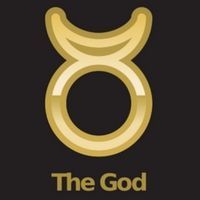 For such a simple design, the Horned God symbol conveys a variety of meanings. The symbol looks like a crescent moon on top of a full moon symbol. The “full moon” portion of the symbol is the god’s head, and the crescent moon represents the horns; sometimes the horns refer to the stag horns, particularly the god Cernunnos. The Horned God is a deity representing the wild and untamed natural world, animals, and the primal nature of humankind.
For such a simple design, the Horned God symbol conveys a variety of meanings. The symbol looks like a crescent moon on top of a full moon symbol. The “full moon” portion of the symbol is the god’s head, and the crescent moon represents the horns; sometimes the horns refer to the stag horns, particularly the god Cernunnos. The Horned God is a deity representing the wild and untamed natural world, animals, and the primal nature of humankind.
Cernunnos, sometimes spelled as Kernunnos, is a name originating from France where it was found on an ancient stone carving. The word itself means “The Horned One.”
The God is associated with the Wild Hunt, strength, and the woodlands: The latter associations also allow the Horned God symbol to represent Pan. Alternative names for the Horned God also include:
- Actaeon
- Ammon-Zeus
- Atho
- Bran
- Cern
- Dhul-Qarnayn
- Dianus
- Faunus
- Herne
- Janicot
- Karnayna (Which may be a reference to Cernunnos in a corrupted form)
- Pashupati
- Tubal-cain
Hecate’s Wheel
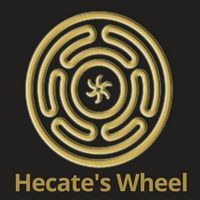
Hecate’s Wheel (also Hekate’s Wheel or Strophalos) is a symbol associated with the ancient Greek Goddess of the same name. Hekate is the Goddess of the Crossroads. She also governs the sky, the ocean, and all of the earth. The symbol represents the Divine as she presents in her triple form. According to “The Chaldean Oracle,” this symbol depicts “Divine Thoughts” as they emanate in the forms of whirling formations or wheels. The symbol also signifies rebirth with it’s “labyrinthine serpent” wrapping around a spiral as the central focus of the icon.
Spiral Goddess Meaning & Symbolism

Hecate’s Wheel (also Hekate’s Wheel or Strophalos) is a symbol associated with the ancient Greek Goddess of the same name. Hekate is the Goddess of the Crossroads. She also governs the sky, the ocean, and all of the earth. The symbol represents the Divine as she presents in her triple form. According to “The Chaldean Oracle,” this symbol depicts “Divine Thoughts” as they emanate in the forms of whirling formations or wheels. The symbol also signifies rebirth with it’s “labyrinthine serpent” wrapping around a spiral as the central focus of the icon.
Triquetra Meaning & Symbolism
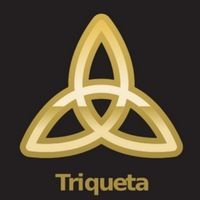 The Triquetra has something in common with triple moon symbols. The triquetra is a symbol you will recognize if you are a big fan of the Charmed television show. Remember that beautiful symbol on the sister’s Book of Shadows? The Triquetra is a shape with three sections woven together. The forms look like finless fish.
The Triquetra has something in common with triple moon symbols. The triquetra is a symbol you will recognize if you are a big fan of the Charmed television show. Remember that beautiful symbol on the sister’s Book of Shadows? The Triquetra is a shape with three sections woven together. The forms look like finless fish.
This ancient Wiccan symbol of power and protection has been around for centuries. It is a symbol appearing on 11th-century Swedish runes and Germanic coins. It also appears in Nordic and Celtic inscriptions. It is far older than Christianity. Christians adopted the symbol to represent the Holy Trinity.
Since the triquetra has a triple aspect to it, the symbol represents the Maiden, Mother, and Crone. The symbol also applies to the Godhead. The Triquetra can represent the Father, Son, and Sage. The triquetra represents the connection between the mind, body, and soul. It also signifies the sky, earth, and ocean waters.
Triskelion Meaning & Symbolism
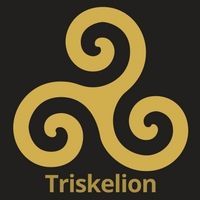 This symbol, like the triquetra, has roots in Celtic history. Still, the sign is older than that as it appears in the writing of Buddhists too. The symbol varies in design, but the basic structure remains. A Triskelion has three spirals all which interlock. It‘s signifies the ocean waters, earth, and space or the cosmos. This symbol also aligns with the Triple Goddess/Goddess symbolism. A spiral symbolizes the Feminine Divine and the womb.
This symbol, like the triquetra, has roots in Celtic history. Still, the sign is older than that as it appears in the writing of Buddhists too. The symbol varies in design, but the basic structure remains. A Triskelion has three spirals all which interlock. It‘s signifies the ocean waters, earth, and space or the cosmos. This symbol also aligns with the Triple Goddess/Goddess symbolism. A spiral symbolizes the Feminine Divine and the womb.
Septogram Meaning & Symbolism
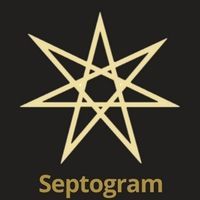 The septogram, also known as the septegram, septagram, or the heptagram, is a star featuring seven points. The star’s structure is a series of connected lines that when complete appear as one continuous, unbroken line. This star has a number of religious connotations.
The septogram, also known as the septegram, septagram, or the heptagram, is a star featuring seven points. The star’s structure is a series of connected lines that when complete appear as one continuous, unbroken line. This star has a number of religious connotations.
- Neopagans view the septogram as a symbol representing the fae and elves; It is therefore called the “Fairy Star” or “Elven Star.”
- The septogram is a symbol worn by practitioners of “Blue Star Wicca:” they refer to the symbol as the “septegram.”
- Each of the points aligns with the first seven planets discovered and used in ancient astrology. The aligning celestial bodies include the Sun, Moon, Mars, Mercury, Jupiter, Venus, and Saturn.
- Each point of the star aligns with the seven days of the week. It therefore serves as an icon alluding to the creation of the world.
- The heptagram is also a reference to the Quran’s first seven verses.
Peace Meaning & Symbolism
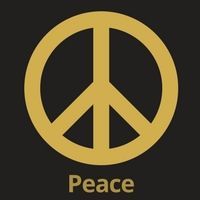 The Peace Symbol is a universal icon understood to express the desire for harmony. It’s origins stem from its creator, Gerald Holtom, who created the icon in the late 1950s. He was a designer, artist, and he made the symbol specifically for the British Nuclear Disarmament movement. The designer created the image based on the semaphore representations for the letters “N” and “D”, which stand for “nuclear disarmament.” The upside down “letter V” in the symbol” represents the “N” and the straight light ascending upward from the base of the “V” represents the semaphore of the letter “D.”
The Peace Symbol is a universal icon understood to express the desire for harmony. It’s origins stem from its creator, Gerald Holtom, who created the icon in the late 1950s. He was a designer, artist, and he made the symbol specifically for the British Nuclear Disarmament movement. The designer created the image based on the semaphore representations for the letters “N” and “D”, which stand for “nuclear disarmament.” The upside down “letter V” in the symbol” represents the “N” and the straight light ascending upward from the base of the “V” represents the semaphore of the letter “D.”
Olive Branch Meaning & Symbolism
 One look at the white dove with an olive branch and one might think of it as a Christian symbol, as the icon does indeed have some Christian associated meaning. But, the Olive Branch and the Dove is a symbol that’s evolved as it has been embraced by various ancient cultures. The olive branch alone has been a symbol representing peace since the fifth century BCE. In ancient Greece, the olive branch was a symbol of spiritual protection as it was believed to keep the evil spirits at bay. It was also seen as a symbol of abundance. The Greek Goddess Eirene (analogous to the Goddess Pax), a deity of Peace, has an olive branch in many of her depictions. The Romans depicted Pax on coins holding an olive branch as well. The Christians used a white dove to represent peace. The biblical story of Noah and the flood link the Greek’s symbol of the olive branch with the white dove: Noah sends the dove out to find land and the dove returns with an olive branch as evidence of finding it.
One look at the white dove with an olive branch and one might think of it as a Christian symbol, as the icon does indeed have some Christian associated meaning. But, the Olive Branch and the Dove is a symbol that’s evolved as it has been embraced by various ancient cultures. The olive branch alone has been a symbol representing peace since the fifth century BCE. In ancient Greece, the olive branch was a symbol of spiritual protection as it was believed to keep the evil spirits at bay. It was also seen as a symbol of abundance. The Greek Goddess Eirene (analogous to the Goddess Pax), a deity of Peace, has an olive branch in many of her depictions. The Romans depicted Pax on coins holding an olive branch as well. The Christians used a white dove to represent peace. The biblical story of Noah and the flood link the Greek’s symbol of the olive branch with the white dove: Noah sends the dove out to find land and the dove returns with an olive branch as evidence of finding it.
Wiccan Wheel of the Year Meaning & Symbolism
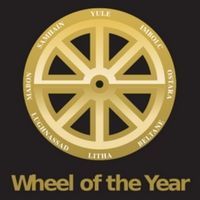 The Wiccan Wheel has four intersecting lines creating eight spokes. The spokes are inside the circle. The symbol is the Witches’ Wheel of the Year. The tip of every spoke represents a Sabbat. The symbol signifies the four Greater and four lesser sabbats of the year. This symbol is the like the solar cross featuring two intersecting lines. It marks the time of the equinoxes and the solstices. The circle represents the never-ending cycle of life and the seasons.
The Wiccan Wheel has four intersecting lines creating eight spokes. The spokes are inside the circle. The symbol is the Witches’ Wheel of the Year. The tip of every spoke represents a Sabbat. The symbol signifies the four Greater and four lesser sabbats of the year. This symbol is the like the solar cross featuring two intersecting lines. It marks the time of the equinoxes and the solstices. The circle represents the never-ending cycle of life and the seasons.
For more information on the Wheel of the Year, check out the article “The Wheel of the Year for Pagans, Wiccans, & Witches,” here on Wise Witches and Witchcraft!
Ankh Meaning & Symbolism
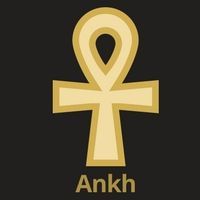 Another symbol Wiccans use is the Crux Ansata or the Ankh. The Crux Ansata is Latin meaning “cross with a handle.” It is also the “Egyptian Cross.” It is a symbol of resurrection and eternal life. It is a hieroglyph meaning “living” or “life.” It represents immortality. This is a symbol worn by some to express they are spiritual rather than a person following one set religion.
Another symbol Wiccans use is the Crux Ansata or the Ankh. The Crux Ansata is Latin meaning “cross with a handle.” It is also the “Egyptian Cross.” It is a symbol of resurrection and eternal life. It is a hieroglyph meaning “living” or “life.” It represents immortality. This is a symbol worn by some to express they are spiritual rather than a person following one set religion.
Eye of Horus Meaning & Symbolism
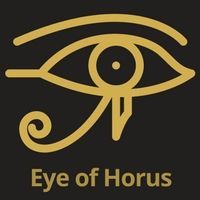 One of the traditional, eclectic power symbols Wiccan use the Wadjet or the Eye of Horus. The eye is a protection symbol. It is one warding off evil spirits and negative energies. The Eye of Horus also one offering healing powers. The eye is popular amulet worn around the neck or on other jewelry adornments.
One of the traditional, eclectic power symbols Wiccan use the Wadjet or the Eye of Horus. The eye is a protection symbol. It is one warding off evil spirits and negative energies. The Eye of Horus also one offering healing powers. The eye is popular amulet worn around the neck or on other jewelry adornments.
Witchcraft Mastery and Magickal Wiccan Symbols
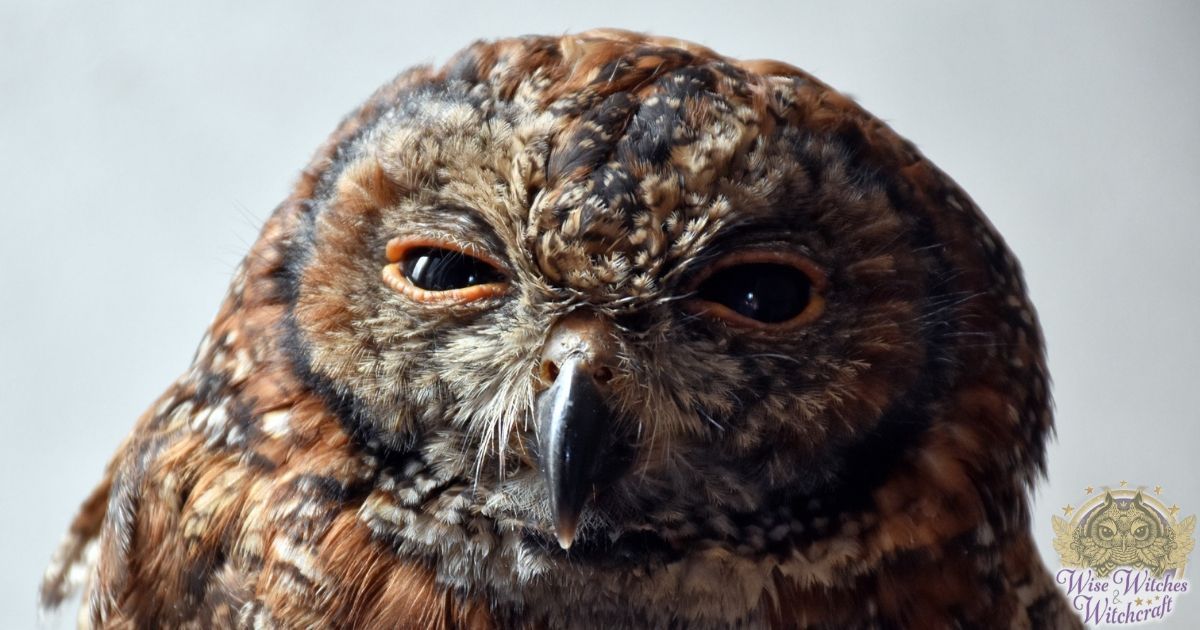
If you desire to practice Wicca and live the Wiccan lifestyle, understanding symbols and meanings is imperative. There are symbols in almost every aspect of the practice. You’re on an exciting journey! Wicca is a life-changing practice. There’s so much you will learn about yourself, the mundane world, and the realms beyond! It’s also a commitment to pursue a path of lifelong learning!
Wait… what?
Yes, Wicca is not just an earth-based religion. It is a way of life. You can expect to read a lot of material. In fact, enjoying reading is almost a prerequisite for being a witch! Evolution and growth on a personal and spiritual level occur naturally and at a different pace for everyone.
As you develop, encountering and being aware of common and not-so-common Wiccan symbols becomes part of your daily routine. The symbols you learn will enrich your waking hours. These same visual prompts and understandings will even enter your dreams at night! You’ll experience life in a more meaningful way.
Wiccans have symbols aligning with an array of subjects and ideas. The written word, dreams, and divination are a few examples. Runes represent cryptic letters and concepts. We can divine the future through dreams or gain incredible life-changing insight. We can do the same with the images on each card in the 78-card tarot deck.
There is a symbolic meaning corresponding with Wiccan tools. The tools are for casting spells and ritual work. The meaning of a rite or spell, its words, and even physical gestures have multiple layers of symbolic meaning.
There’s rich meaning in words, utterances, and actions when working magic (magick). Remember, words have great power. So, having knowledge of these symbols and their meanings can help bring new levels of success to your spellcraft and magickal pursuits – if you identify as a Witch. Not all Wiccans are Witches.
Once you study Wiccan symbols, you’ll be in for a huge surprise! Why? There are so many Wiccan symbols to learn the task is mind-boggling. These symbols originate from cultures all over the world. Some are universal. Others are regional. Also, unfortunately, there are symbols which are all-too-often misunderstood and the center of controversy – the Pentacle and Pentagram being two of the most recognized and maligned because of non-magick folk receiving misinformation.
For centuries, humankind has sought to understand the world and the Universe. We develop our understanding using categorization. We understand things better when there is a sense of orderliness. Things are easier to explore if we ensure organization and identify connectedness.
Symbols have many layers of meaning. Poetry is something each reader interprets from a unique perspective. Symbols can also be subject to interpretation. For instance, one person might see a vulture and equate the bird with death.
Another might see the vulture and associate it with the funerary Goddess Isis. Another person might see a vulture as a symbol of reminding them of their last lousy relationship.
“Hey Janey, how’s Todd doing? Oh, I let that vulture fly the coupe a long time ago, girlfriend!”
Many things influence the meaning of symbols. Some symbols have pervasive meanings. Others might differ depending upon cultural, religious, native, and local influences.
Before astronomy, there was astrology. Before chemistry, there was alchemy. Before science, there was magick. The shamans, magicians, priests, priestesses, and astrologers sought knowledge and were always learning. They tried to understand the heavens and earth.
The most natural means of learning is through analogy, comparison, and interpretation. When someone tries to categorize something, the person does so by making comparisons. A person will use one or more items, concepts, or ideas and compare it with something familiar. The familiar objects or concepts one uses stem from the natural world.
In occult circles, practitioners use existing and personalized correspondences. These correspondences help them to identify items sharing similar attributes or meanings. This helps the practitioner choose tools, herbals, and more based on universal symbolism.
So, what is a correspondence? Something symbolizing an essential item, idea, or concept. If someone needs objects symbolizing the air element, a correspondence table is helpful. It reveals things to use in conjunction with the proper words and actions. Here, one might choose white feathers symbolizing flight. Another practitioner might select frankincense to symbolize the ascension of spirit.
Many Wiccan practices depend on symbols. It’s imperative you use and understand these symbols with accuracy. You’ll use Wiccan symbols for:
- Writing in your Book of Mirrors. This book is a personal journal for tracking your experiences.
- Writing in shorthand form or in runes in your Book of Shadows. (also known as Grimoire)
- Creating correct symbolic correspondences.
- Empowering magickal workings and objects like amulets and talismans.
- Dream narratives and fragment interpretation.
- Spells, rituals, and meditations.
You’ll make rich connections when learning the language of symbols. You’ll even develop your own understanding of symbols for further meaning. It’s a good idea to keep a binder or notebook where you can store a few notes on the symbolic meanings you explore.
More Powerful Magick With Wiccan Symbols

There are symbols everywhere speaking to you every day. Layers and layers of meaning open to you for the opportunity to gain insights! As you examine the visual elements of symbols, you’ll be able to figure out the meaning of other visual symbols. You’ll also be able to meditate on symbols to develop your own understanding!
Everything you learn about Wiccan symbols will intensify your life insight. You’ll learn about the cultural beliefs associated with symbolism. You’ll also recognize with the utmost certainty that the world around you seems “more alive!”
You’ll be able to appreciate music, poetry, and the arts with greater appreciation. Film, stories, and entertainment have layers of meaning too! You’ll understand the messages you get in your dreams as well since it is symbols you receive in dream messages.
The symbols you learn will help you understand animal messages and encounters. You will also be able to identify when the Universe is trying to guide you or teach you something. Even life’s obstacles will become meaningful as you’ll see the hidden messages in their presence!
Because of your understanding of what Wiccan symbols mean, you’ll enrich your life! The world of Wiccan symbols is full of unique imagery and ideas. These images and ideas are like a complex language. With every symbol having multiple meanings, the symbolism is useful for many purposes.
Symbolism helps enrich a Wiccan’s understanding of the God/Goddess head. It helps the magical practitioner make sense of the universe. Connecting with the Divine becomes easier. Why? Because symbols help Wiccans understand the Divine in a way traditional language cannot.
Magickal Wiccan Symbols: A Sacred Language
Symbols are a language. Think about language and its structure. There is a generative or transformative grammar at the root of many spoken languages: The natural sounds a person makes before learning to speak structured language.
Many languages have a lot more in common than we know. Scholars call these languages “genetically-related.” Language is something we learn from the moment we are born. But, we seem to base what we learn on our natural sounds and utterings.
So, what does any of this have to do with the way we understand symbols?
Consider:
- Is it possible these innate sounds and utterings stem from another origin? If so, where do the sounds come from?
- Even better, what source are we tapping into when we learn a language?
- Is this something we have yet to discover about ourselves and how we learn to communicate?
- Are the meanings behind languages, dreams, tarot imagery, and other symbols originating from the same place? Is that place inside us, from some outside source, or both?
Welcome to the Collective Unconscious
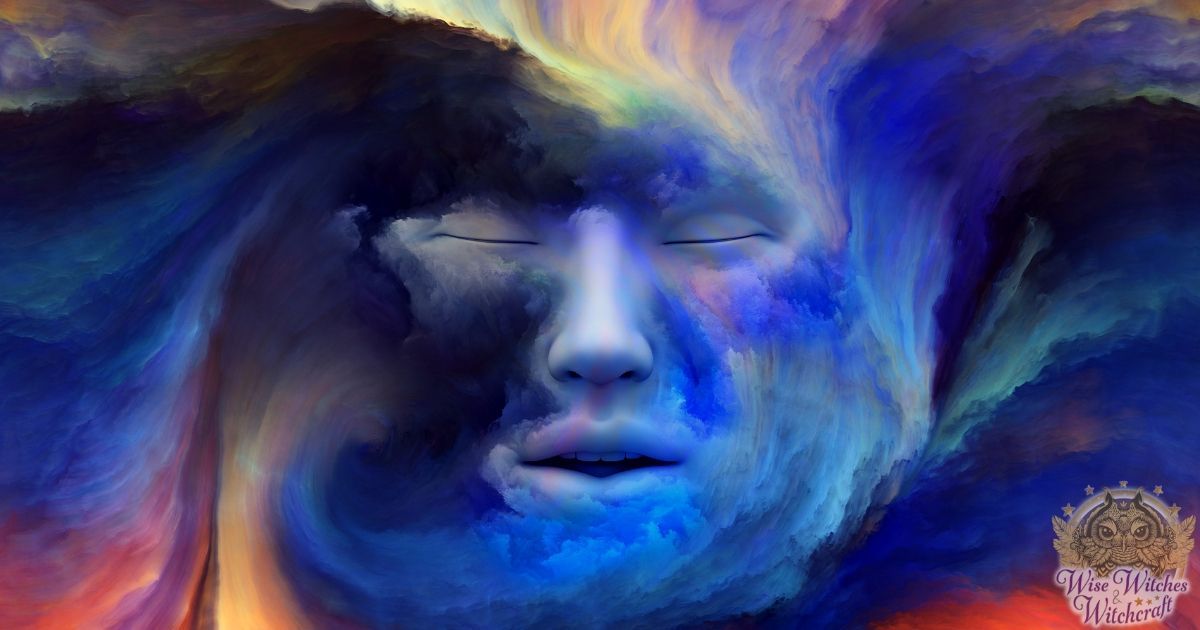
Similarities exist in our understanding and use of symbols. The underlying and unspoken meaning of some symbols stems from an unusual source. Not all symbolic meanings are something we learn from our life experience. Per Carl Gustav Jung, some symbolic meanings come from a different place; the famed psychoanalyst calls this place the collective unconscious.
Jung spends a lot of time analyzing dreams during his prestigious career. He coins the term collective unconscious. It is a state of the unconscious mind all human beings share. Jung asserts it is here where archetypes and human instincts exist. He explains the existence of the collective unconscious as the home of archetypes. These universal symbols prove pervasive throughout cultures and societies. It is this collective well of imagery allowing us to understand and share symbols. The collective unconscious enables us to share symbols across time and cultures.
So, what are these archetypes Jung describes? They are symbols standing for concepts bigger than life and rich in meaning. Want an easy way to understand archetypes? Imagine you are about to dive into the collective unconscious. You are about to meet archetypes you might encounter. Guess who is there to greet you!
- Mother Earth
- Father Time
- Grandmother Spider
- The Fool
- The Empress
- The Judge
- The Maiden, Mother, and Crone aspects of the Divine
- The Father, Son, and Sage
- And more!
What does a psychoanalyst’s theories about symbols have to do with Wiccan symbols? A fast view of the above list shows that many of Wicca’s symbols are archetypes. All we must do is wait until they emerge from the collective unconscious! In fact, if we practice lucid dreaming, we can encounter the archetypes on purpose!
It’s important to note archetypes are universal. Many Wiccan symbols are pervasive and stem from alternative cultures too. These symbols have various meanings depending on the observer. Wiccan symbols, in fact, all symbols arise from human experience.
The Divine is something too vast for us to comprehend. The most we can do is assign human attributes to our patron deities. We come to develop a relationship with the Divine by exploring cultural myths. Symbols also help Wiccans identify messages in dreams and from animal teachers. They point to synchronistic experiences appropriate path in life!
In what ways do we form an understanding of symbols?
Even better, what shapes our worldview and our understanding of our reality?
Assigning Your Own Meaning To Wiccan Symbols
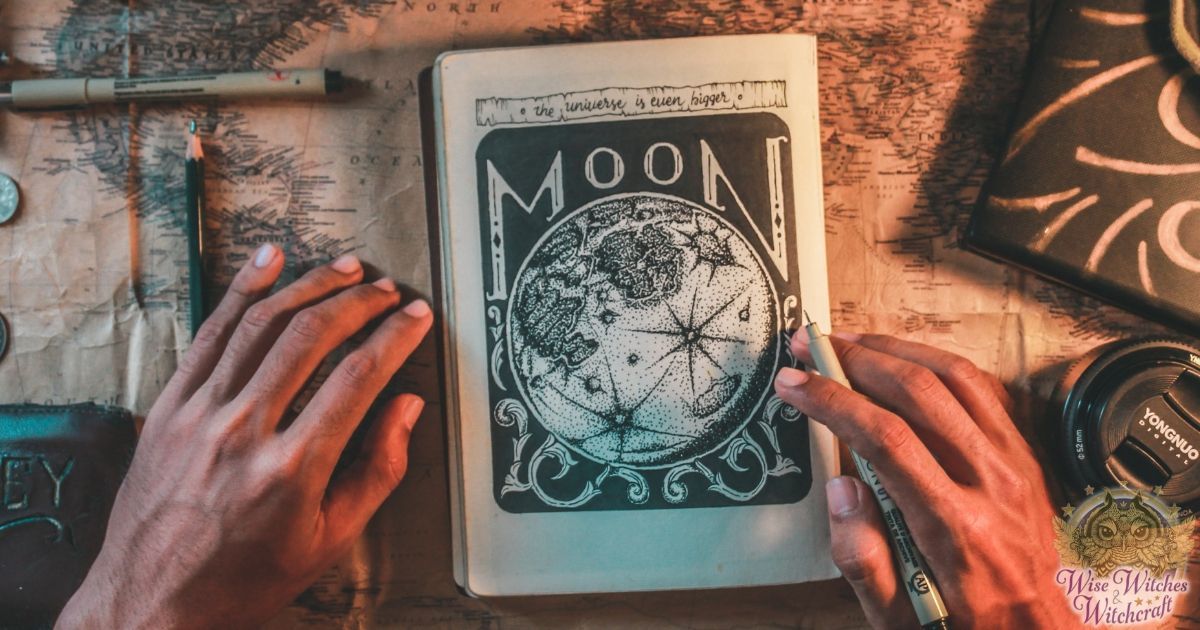
If something important or memorable happens to you, it can prove a source of symbolism. Creative moments and your imaginings can also have meaning. Sometimes we apply symbolism to those things surrounding us in the physical world. Doing so helps us keep our reality orderly and easier to understand. It also allows us to add layers of meaning to our experiences.
For example, let’s say a person who is considering a substantial investment randomly sees a tarot card from the Suit of Pentacles. And, let’s also say they couldn’t get that card out of their mind each and every time they tried to focus on the investment. Now, let’s add to the mix that the person had no foreknowledge of tarot card meanings. But, with the nagging feeling to pay attention to the tarot card, they Google it. To their complete shock, the particular card they saw symbolizes abundance and wealth!
Right. In the tarot, pentacles represent abundance and so much more! On our sister-site, BuildingBeautifulSouls.com, you can get in-depth tarot card meanings and learn how to read tarot cards.
Now, imagine a moment when this same person defies all advice not to make the investment because they knew the pentacles tarot card was a sign, an omen, a symbol that they should make the investment.
It is of no matter what their level of wisdom or experience. They recognized and heeded the signs and symbols. You can imagine the thrill when they end up making the right decision. They defy the “odds.” It is a moment like this that can symbolize something profound.
Every time the person thinks about the event, they remember the thrill and anxiety. They remember the raw fear when defying conventional wisdom. They have a memory featuring an “underdog win!” Their memories and actions are symbolic of happiness and success.
They have learned to pay attention to the signs and symbols and follow their natural instincts! Wow! Heavy stuff, right? It gets better so let’s break it down for ease of understanding! Symbols represent ideas or concepts. They are images, characters, marks, or visual triggers representing or signifying something else. Symbols are packets of compressed data. They make a lot of information available through a smaller package! Wiccan symbols do the same thing!
Learning about Wiccan Symbols Contributes to An Enriched and Magical Life
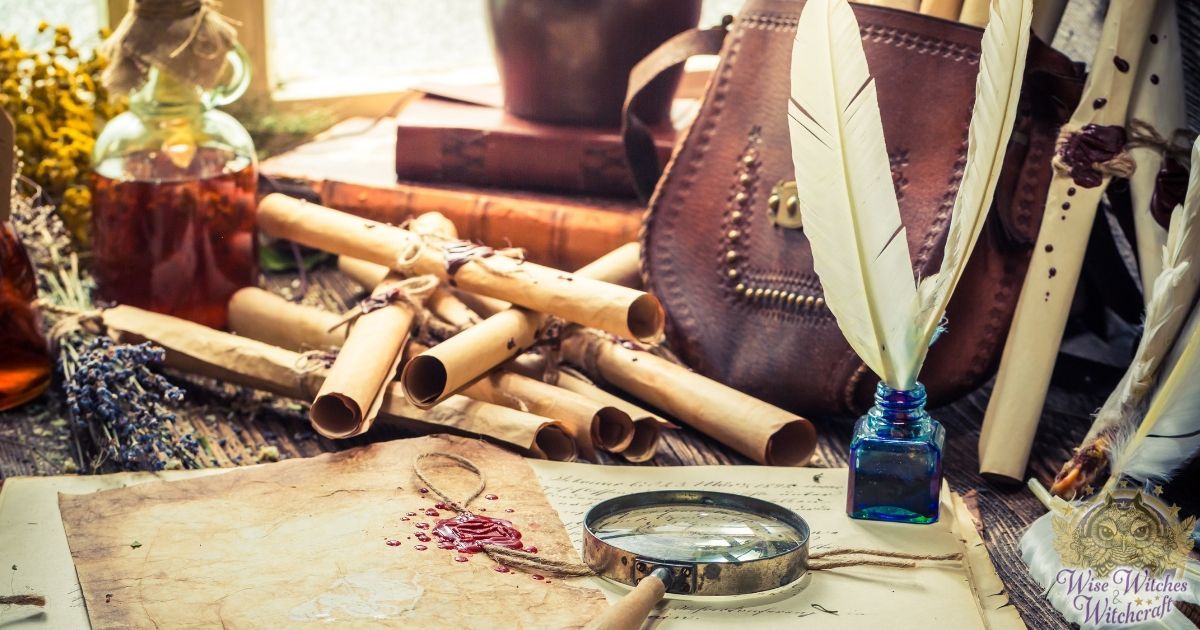
Our understanding of symbols comes from different sources. We learn about symbols as we experience life. Those things holding great meaning to us can end up being symbolic. Notable events in our lives are sometimes a source of symbolism.
The collective unconscious (possibly the source of all symbolism) is accessible to all. It is something we often tap into when dreaming. But, we can see these same archetypes usually residing in the collective unconscious. We can identify them on the physical plane. When we explore archetypes, we become capable of detecting them with greater ease.
With richer meanings to draw from, life is more meaningful and fulfilling too. We live with greater deliberation, love deeper, and have more profound insights. As our understanding of symbolism evolves, it reflects in our daily lives. We can live day-to-day with greater focus and passions.
Leave A Reply
You must be logged in to post a comment.


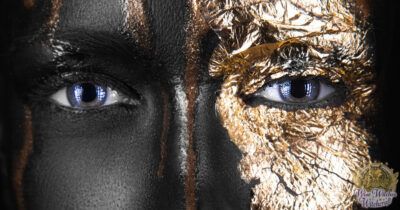
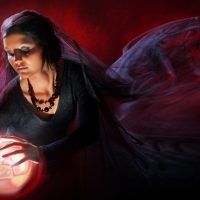
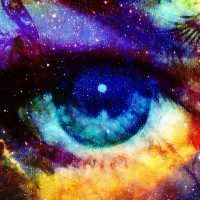

Comments